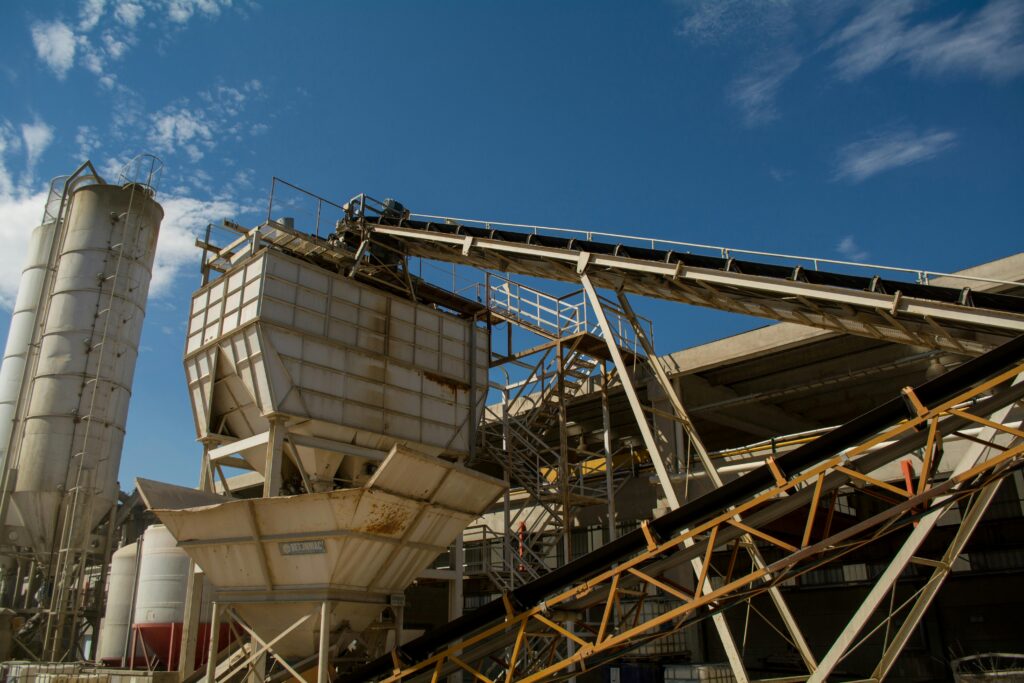Material conveyance systems are critical components in industrial processes, moving raw materials, intermediate goods, and finished products efficiently and safely. Choosing the right system is crucial for optimizing productivity, reducing costs, and maintaining safety standards. This blog post explores the key factors to consider when selecting a material conveyance system and provides an overview of common types available in the market.
Factors to Consider
- Material Characteristics
- Size and Shape: Granular, powdery, fibrous, or irregularly shaped materials may require specific types of conveyors.
- Density: Heavier materials demand more robust systems.
- Fragility: Fragile items may need gentle handling to prevent damage.
- Moisture Content: Sticky or wet materials might require systems with anti-clogging features.
- Capacity and Speed Requirements
- Understand the volume of material to be conveyed per unit time.
- Ensure the system can meet your throughput demands without bottlenecks.
- Operating Environment
- Consider the temperature, humidity, and potential for exposure to corrosive substances.
- For food or pharmaceutical applications, ensure compliance with hygiene standards.
- Space Constraints
- Assess the available installation area, including vertical and horizontal space.
- Choose systems that fit within your layout while optimizing flow.
- Cost and Maintenance
- Evaluate initial investment, operational costs, and maintenance needs.
- Consider energy efficiency and ease of part replacement.
- Safety and Compliance
- Ensure the system adheres to local and industry-specific safety regulations.
- Features like emergency stops and guarding mechanisms are essential.
Types of Material Conveyance Systems
- Belt Conveyors
- Best for: Bulk materials and general transport.
- Advantages: Versatile, cost-effective, and easy to maintain.
- Limitations: Not suitable for steep inclines or very heavy loads.
- Screw Conveyors
- Best for: Powdered or granular materials.
- Advantages: Compact design, good for enclosed transport.
- Limitations: Can cause material degradation and is prone to clogging.
- Pneumatic Conveyors
- Best for: Lightweight, granular, or powdered materials.
- Advantages: Flexible routing and hygienic.
- Limitations: High energy consumption and limited capacity for heavy materials.
- Bucket Elevators
- Best for: Vertical transport of bulk materials.
- Advantages: Efficient for height differences and compact footprint.
- Limitations: Requires regular maintenance and is material-specific.
- Chain Conveyors
- Best for: Heavy or abrasive materials.
- Advantages: Durable and can handle high loads.
- Limitations: Higher initial costs and maintenance.
- Vibratory Conveyors
- Best for: Fragile or irregular materials.
- Advantages: Gentle handling and precise control.
- Limitations: Limited to short distances.
Making the Right Choice
Selecting the optimal conveyance system requires a holistic understanding of your operation’s specific needs. Start by defining your material characteristics and operational goals. Collaborate with suppliers and engineers to evaluate options and perform feasibility studies. Testing a small-scale version of the system can also provide valuable insights before full-scale implementation.
Conclusion
A well-chosen material conveyance system enhances efficiency, reduces operational costs, and ensures smooth workflow in your facility. At Engineered Machines, PLLC, we specialize in engineering solutions tailored to your unique requirements. Contact us today to explore how we can help you design and implement the ideal material conveyance system for your operation.
